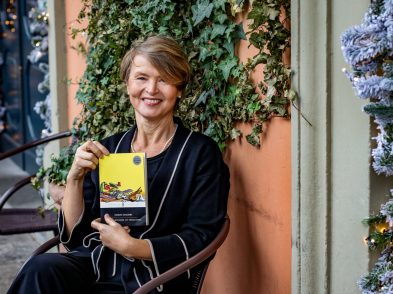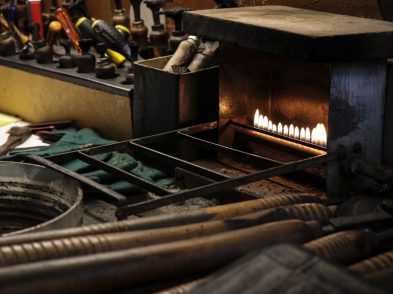Swietlan Nicholas Kraczyna was born in 1940 in Russian-occupied Poland, but had to leave in his early years once the Germans invaded. He eventually ended up in the United States, where he studied art and won a scholarship to Italy, which he immediately loved. After completing his education, he returned to Florence to live here for the rest of his life.
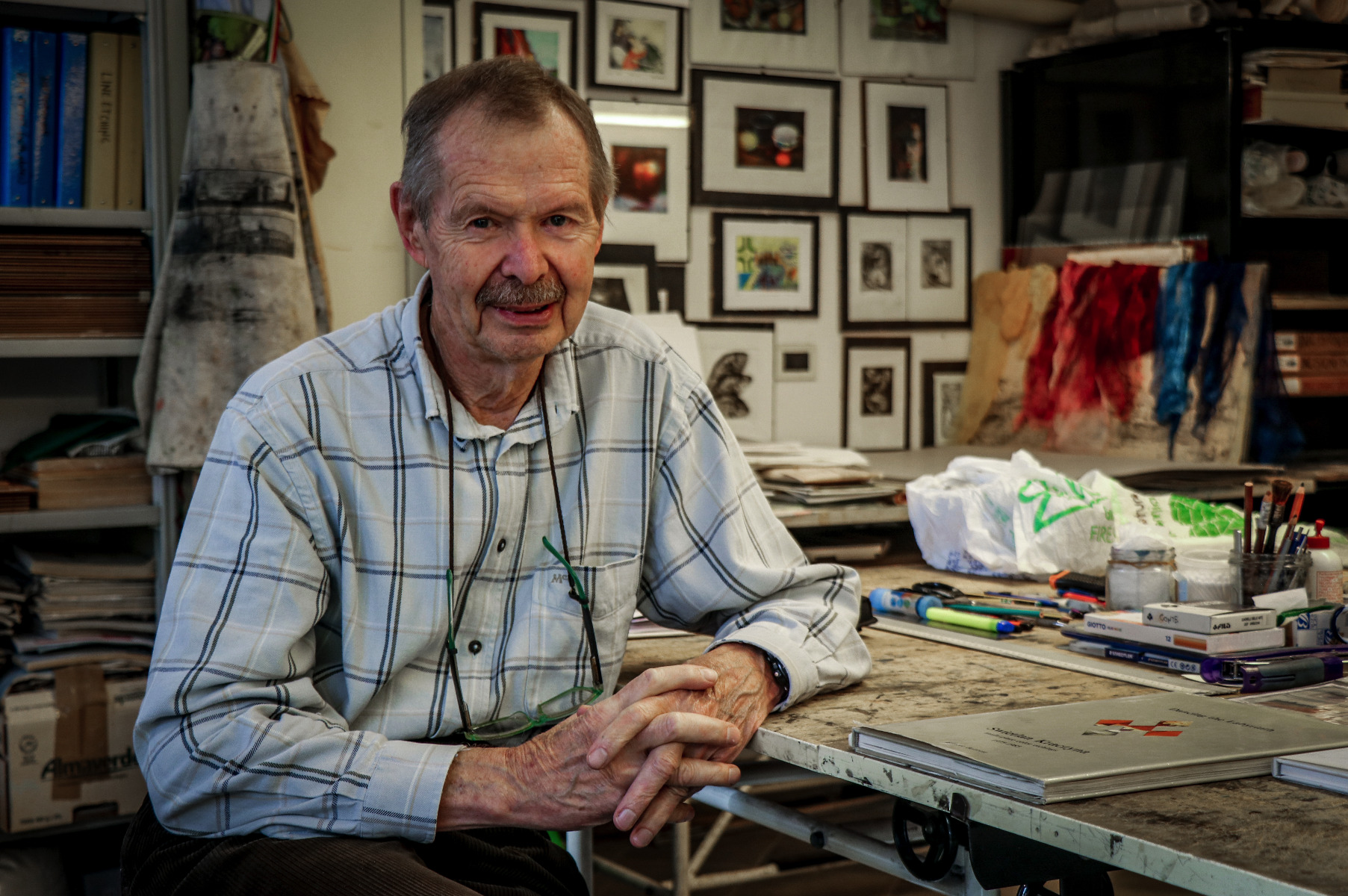
Swietlan Kraczyna in his Florence printmaking studio. Ph. Antonia Mufarech
While studying in Rome in 1961, Kraczyna saw Pieter Bruegel’s The Fall of Icarus, for the first time. Unaware of what this experience would mean in the future, the young artist was captivated by the painting. “The moment I encountered Icarus when I was 21, I, like most young people of that age, wanted to fly. To feel the beauty of soaring,” says Kraczyna. Almost 60 years after his first encounter with Icarus, the myth still plays a role in the artist’s life. “Although I’m now 81, I continue to identify myself with that desire to fly,” he says.
The Greek legend of Icarus tells the story of Daedalus, who constructed wings using feathers and wax to leave the labyrinth he created. Daedalus instructed his son, Icarus, to fly neither too high, nor too low, as the sun’s heat could melt the wings, and the sea’s humidity could obstruct them. Ignoring his father’s instructions, Icarus flew close to the sun and the wax that attached Icarus’ wings to his body melted, resulting in a tragic fall.
“In the myth of Icarus, it is said that he disobeys his father. I interpreted not quite the same way that he disobeyed,” says Kraczyna. “He just began to soar, fly, feel the high that he was receiving from soaring. So it’s not that he disobeyed—he just got carried away by the great pleasure of freedom,” he says. To Kraczyna, the fact that Icarus dies doesn’t matter because he was able to fly. “We all die. How we live is the important part. What you accomplish in the process of living, between being born and dying—that is what matters,” says the artist.
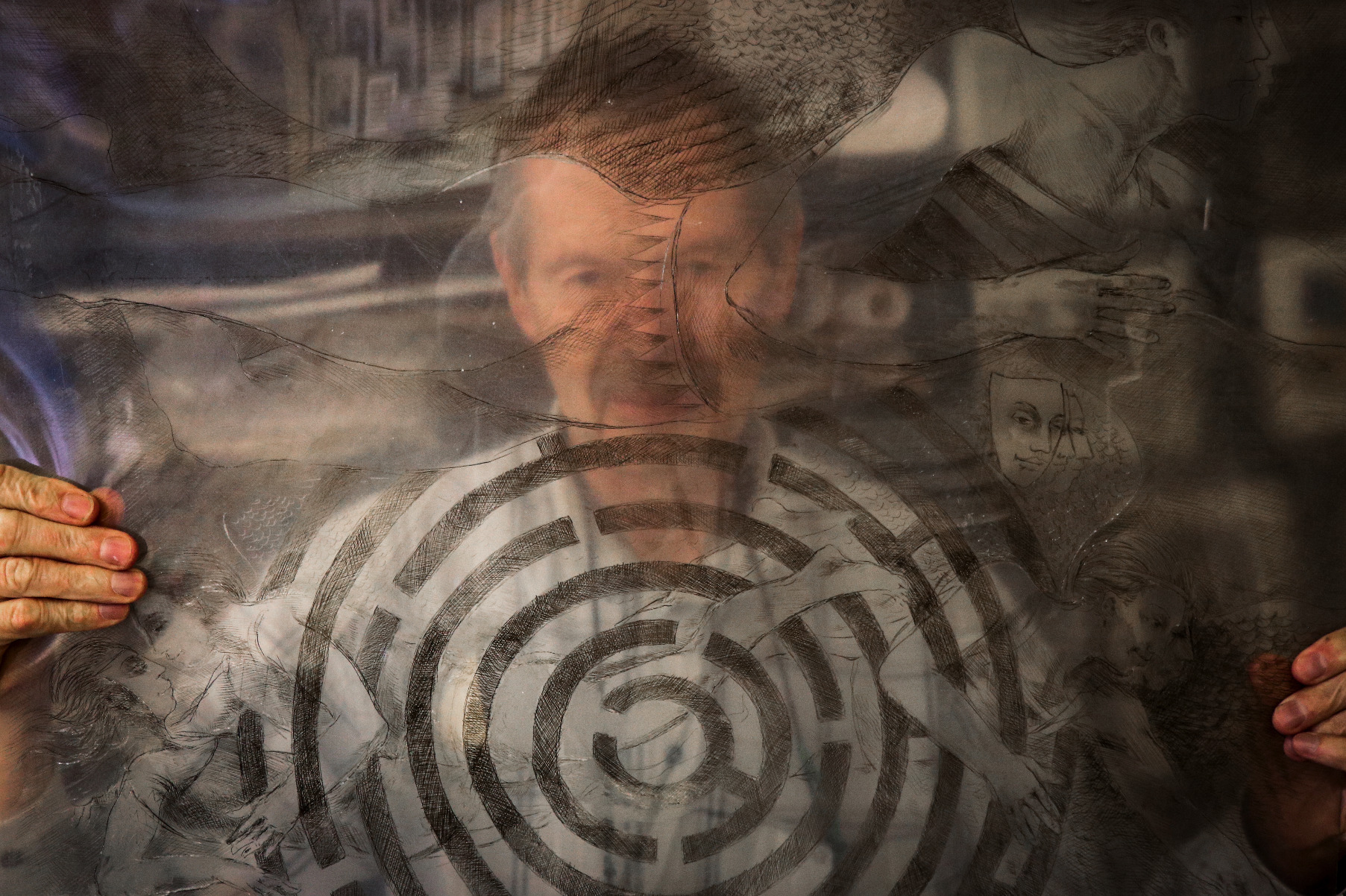
Swietlan Kraczyna holding one of his templates containing Icarus’ labyrinth. Ph. Antonia Mufarech
Kraczyna has reacted to different personal and historical experiences, such as being a refugee, World War II, and Florence’s 1966 flood, using Icarus as a metaphor. For example, instead of talking about the killing of Aldo Moro, the artist used the imagery of the labyrinth. “Like Daedalus constructed the labyrinth that imprisoned him, we’ve created a society that imprisons us and we want to fly out of it, break away from the labyrinth we have created,” says Kraczyna.
When he is not painting in his studio, Kraczyna teaches art classes at Syracuse University in Florence. He says that every year when students arrive, they are 21, so he feels the excitement of teaching something that he learned when he was their age. “Teaching is part of learning for me. I do teach that of which I have learned from experience, but also learn from what the students discover.” Whether explaining how to depict a sense of depth using watercolors to his class or creating new prints in his studio, Kraczyna’s flight continues.
“There’s still this desire—like Icarus’ desire to fly—to speak, to say something about me in my times and what my desires, accomplishments and failures have been,” says Kraczyna. “I want to work until my last breath. Until I’m still capable of holding a pencil or a brush with my hand. Because there are too many ideas that I still want to explore.”
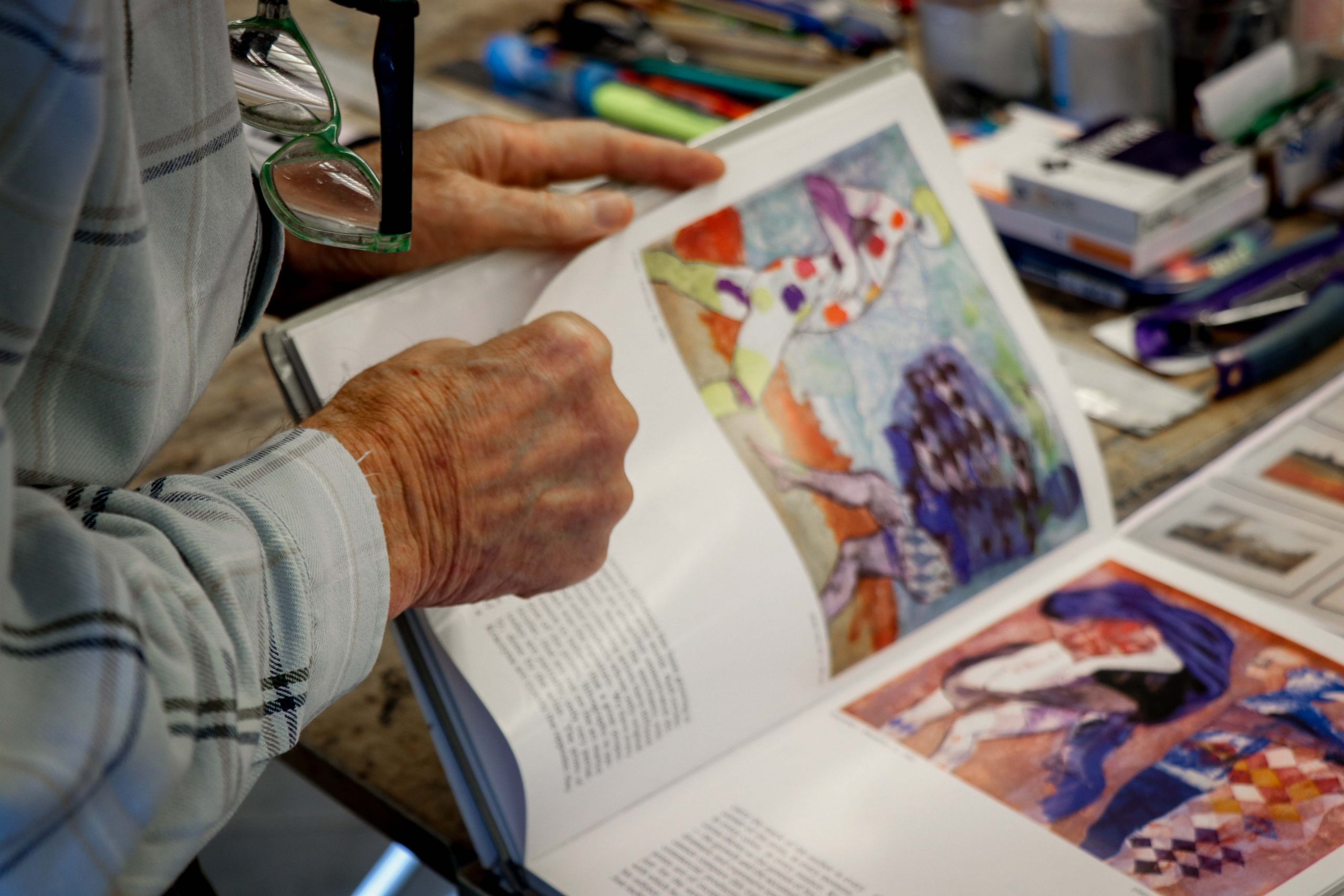
Swietlan Kraczyna flipping through photographs of his artworks. Ph. Antonia Mufarech
The only difference the artist feels between now and who he was in his youth is that he is much more aware of his constraints. “When you’re 21 years old, you don’t feel the limitations. So that’s the only difference. But the desire to soar is still there,” he says.
When asked what advice he would give his younger self, Kraczyna says, “I’m glad I’m still 21.”

